Imagine if your money could work as hard as you do—a financial sidekick steadily growing your wealth while you sleep, party, or binge-watch your favorite series. Welcome to the wild and wonderful world of self-directed IRAs, where typical investment boundaries are tossed aside in favor of unprecedented freedom and endless opportunity. Whether you’re a millennial stepping into the realm of sophisticated wealth-building or a Gen Z trailblazer seeking to break free from traditional financial molds, this guide is your passport to understanding everything about self-directed IRAs: the benefits, the fees, and all the insider knowledge to take control of your financial future.
Self-Directed IRA: Benefits, Fees & Everything You Need to Know Table of Contents
Why Consider a Self-Directed IRA?
The Nuts and Bolts of Self-Directed IRA Investments
Understanding the Fees Associated with Self-Directed IRAs
Tax Benefits and Considerations of Self-Directed IRAs
The Risks and Challenges of Self-Directed IRAs
How to Set Up Your Self-Directed IRA
Ensuring Compliance: Navigating IRS Rules and Regulations
Case Studies: Real-Life Success Stories of Self-Directed IRA Investors
Resources and Community Support: Your Next Steps
Crafting Your Long-Term Self-Directed IRA Strategy
Self-Directed IRA: Key Takeaways for Financial Empowerment
What Is a Self-Directed IRA?
At its core, a self-directed IRA (Individual Retirement Account) is like a regular IRA on steroids—except instead of being limited to investing in stocks, bonds, or mutual funds, you’re given carte blanche to invest in a wide array of alternative assets. Think real estate, precious metals, private equity, startups, cryptocurrency, and even more exotic ventures like tax liens or crowdfunded projects. Essentially, you become the master of your own investment destiny.
Unlike traditional IRAs, where investment options are strictly dictated by financial institutions, the self-directed IRA puts the power in your hands. It’s like choosing your own adventure book where every page you turn could lead to a unique opportunity. But with great power comes great responsibility—understanding the specific rules, fees, and risks associated with your self-directed IRA is crucial to making savvy financial choices.
In plain language, a self-directed IRA is a retirement account that allows you unparalleled flexibility in selecting your investments while offering the same tax advantages as conventional IRAs. It’s the financial equivalent of having an “open bar” for investments (just don’t overdo it!).
Why Consider a Self-Directed IRA?
You might be wondering: why would I swap the simplicity of traditional account options for a more hands-on, alternative investment approach? The answer lies in the unparalleled benefits that a self-directed IRA can offer. Let’s break down the most compelling reasons:
- Broader Investment Opportunities: Traditional IRAs often stick to the tried-and-true options like stocks and bonds. Self-directed IRAs open the door to investing in real estate, private businesses, precious metals, and even digital assets.
- Tax Advantages: Just like your conventional IRA, contributions to a self-directed IRA can grow tax-deferred or even tax-free in the case of a Roth, letting your money work for you without the heavy taxman breathing down your neck.
- Greater Control: You call the shots. Instead of relying on a fund manager or a pick of standard portfolios, you get to decide exactly where, when, and how to invest your hard-earned savings.
- Diversification: By venturing beyond the stock market, you can diversify your retirement portfolio across multiple asset classes, potentially reducing overall risk and increasing your chances of high returns.
- Potential for Higher Yields: With the freedom to invest in non-traditional assets, you might find opportunities with higher returns than the conventional investment avenues that often yield modest gains.
However, while the freedom is exhilarating, it’s essential to also be aware of the associated challenges and responsibilities before diving headfirst.
The Nuts and Bolts of Self-Directed IRA Investments
With a self-directed IRA, the investment options are as diverse as a Netflix library on a Saturday night. But what does this mean in practical terms? Let’s explore some popular asset classes you might consider:
Real Estate
Real estate is the crown jewel for many self-directed IRA holders. Whether it’s rental properties, raw land, or even commercial buildings, investing in real estate can offer consistent cash flow and long-term appreciation. Just remember: managing real estate requires some elbow grease—and a good property manager might be a worthy investment itself.
Precious Metals
For those who like their investments with a little sparkle, precious metals such as gold, silver, and platinum are a popular choice. These tangible assets are often seen as a hedge against inflation and economic uncertainty. And while you might daydream about striking gold like a modern-day prospector, always remember to follow IRS guidelines for storing and insuring these assets.
Private Equity and Startups
Imagine being an angel investor or backing the next big thing before it becomes mainstream—this is the tantalizing world of private equity and startup investments within your self-directed IRA. While the potential rewards are significant, the risk factor is also high given the volatility of early-stage businesses. It’s all about your risk tolerance and how much research you’re willing to do.
Cryptocurrency and Digital Assets
Crypto enthusiasts, rejoice! Self-directed IRAs provide a legal way to invest in cryptocurrencies like Bitcoin, Ethereum, and other digital assets. With the ever-changing dynamics of the crypto market, this asset class can yield remarkable gains—but with equally dramatic downturns. Enter the world of digital assets with caution, always ensuring your strategy is as solid as your Wi-Fi connection.
Other Alternative Investments
The self-directed IRA universe is vast, including investments in crowdfunding ventures, promissory notes, and even tax liens. While these options might seem offbeat, they can offer unique opportunities for those willing to navigate less-trodden financial paths.
Navigating these varied investments requires not just fun and flair but also a meticulous understanding of IRS regulations and due diligence. However, mastering these nuances is what empowers you to truly customize your retirement portfolio according to your unique financial aspirations.
Understanding the Fees Associated with Self-Directed IRAs
In the realm of self-directed IRAs, the adage “there’s no such thing as a free lunch” rings particularly true. While the promise of diverse investment choices is alluring, it’s crucial to be aware of the fees that might come along for the ride. Think of these fees as the cover charge to enter the exclusive club of alternative investments.
Setup Fees
Many custodians charge a one-time setup fee for establishing your self-directed IRA. This fee covers all the initial paperwork and basic administrative tasks required to get your account up and running. It’s a bit like paying a one-time admission fee to a very exclusive concert—you’re investing in the experience from day one.
Annual Maintenance Fees
Unlike traditional IRAs that generally have minimal ongoing costs, self-directed IRAs often come with annual maintenance fees. These fees support recordkeeping, reporting, and the general administration of your account. The fees can vary widely depending on the custodian and the number of assets held within the account.
Transaction Fees
Every time you buy or sell an investment within a self-directed IRA, you might incur a transaction fee. These charges are usually relatively modest, but they can add up if you’re an active trader. It’s similar to paying a small tip each time you get a latte; individually, they seem minor, but collectively they can make a dent in your budget.
Asset-Specific Fees
Some investments, particularly in real estate or complex alternative assets, may involve additional fees related to appraisal, management, or even custodial storage (in the case of precious metals). These fees are variable and highly dependent on the nature of the asset, so they require careful consideration during your decision-making process.
Account Transfer or Liquidation Fees
Should you decide to switch custodians or liquidate your self-directed IRA, you may encounter fees associated with account transfers or closings. As with any financial transaction, it pays to read the fine print and have a contingency plan in place.
Although fees are an inherent part of managing a self-directed IRA, being well-informed about them means you can plan and strategize accordingly. Sometimes, a slightly higher fee might be justified if it grants you access to better investment opportunities and more robust administrative support.
Tax Benefits and Considerations of Self-Directed IRAs
One of the biggest draws of self-directed IRAs is their tax-advantaged status. Just like traditional IRAs, these accounts can either defer taxes on your investments until withdrawal or, in the case of a Roth, offer tax-free growth. Who wouldn’t want to keep more of their money in their pocket, right?
Tax-Deferred Growth: When you invest in a self-directed IRA, your earnings can compound without being tampered by yearly taxes—at least until you start taking distributions. This tax deferral means that your investment capital can work for you, turbocharged by the power of compounded growth over time.
Tax-Free Withdrawals (Roth IRA): If your self-directed IRA takes the Roth route, your contributions are made with after-tax dollars, but your withdrawals in retirement are tax-free. This can be especially beneficial if you anticipate being in a higher tax bracket in the future.
Unrelated Business Income Tax (UBIT): One must tread carefully, however. If your self-directed IRA invests in a business or income-generating activity that isn’t directly related to traditional investments, you might be subject to UBIT. Think of it as a small tax curveball designed to ensure that all taxing bases are covered.
Deductibility of Contributions: Depending on your income level and whether you participate in an employer-sponsored retirement plan, your contributions to a self-directed IRA may or may not be tax-deductible. Knowing these details can help you tailor your retirement planning strategy to maximize tax advantages.
Ultimately, understanding the tax implications of a self-directed IRA is paramount. Consult with a tax advisor or financial planner who understands the intricacies of alternative investments to ensure you remain compliant with IRS requirements while maximizing your tax benefits.
The Risks and Challenges of Self-Directed IRAs
Before you start daydreaming about investing in your next blockbuster real estate deal or that quirky cryptocurrency startup, it’s vital to acknowledge that self-directed IRAs aren’t a magic money machine—there are risks and challenges to consider.
Due Diligence: Self-directed IRAs require you to perform thorough due diligence on each potential investment. Unlike traditional stocks where market dynamics are widely understood and regulated, alternative investments demand extra research and a keen understanding of the market. Failing to do this homework thoroughly can result in losses—and no one wants financial headaches.
Regulatory Complexity: The IRS has strict rules governing what you can and cannot do with your self-directed IRA. Engaging in prohibited transactions, such as self-dealing or benefiting oneself directly, can result in severe penalties or disqualification of the IRA. Consider these regulations your financial “house rules”—break them, and you might find yourself booted out.
Liquidity Issues: Many alternative investments, like real estate or private equity, are not very liquid. This means that if you need quick access to cash, selling these assets might be challenging or time-consuming. Maintaining a balanced portfolio with a mix of liquid and illiquid assets is essential to avoid financial pinches.
Custodian Dependency: Self-directed IRAs must be held by an IRS-approved custodian, and the quality of service (and fee structures) can vary widely between providers. Choosing a reputable custodian who understands the specific nuances of your chosen investments is crucial.
Market Fluctuations: As with any investment, the value of your holdings can fluctuate based on market conditions. This is particularly true for volatile asset classes like cryptocurrency or emerging market ventures. It’s important to develop a robust risk management strategy as part of your overall plan.
Recognizing these risks doesn’t mean you should shy away from self-directed IRAs entirely—it merely highlights the importance of being well-informed, diligent, and ready to navigate the challenges as you sculpt your personalized investment adventure.
How to Set Up Your Self-Directed IRA
If you’re ready to take control of your financial future by creating your very own self-directed IRA, here’s a step-by-step guide to get you started. Spoiler alert: the process is not as daunting as it may seem!
Step 1: Choose a Reputable Custodian
Your first move is to pick an IRS-approved custodian who specializes in self-directed IRAs. Do your research—compare fees, customer reviews, and the range of investment options available. After all, this is the partner who’ll help protect your funds and enforce the IRS rules, so choose wisely.
Step 2: Open Your Self-Directed IRA Account
Once you’ve chosen a custodian, the next step is filling out the necessary paperwork to open your account. This is generally straightforward, though it might include providing details about your identity, your financial background, and your initial funding source.
Step 3: Fund Your Account
Next comes the money part. There are several ways to fund your self-directed IRA: a rollover from an existing retirement account, a transfer from another IRA, or a new contribution—subject to annual limits and eligibility criteria. Be sure to confirm that your funds are eligible for transfer to avoid any unnecessary tax complications.
Step 4: Select Your Investments
Now for the fun part: choosing from the myriad of investment opportunities available! Whether it’s real estate, cryptocurrency, or private equity, each decision should be backed by thorough research and consultation with financial advisors where needed.
Step 5: Maintain Proper Records
Recordkeeping is your best friend here. Document all your transactions, track fees, and ensure that every investment complies with IRS guidelines. Regular audits and consultations with your custodian and tax professional are essential to keeping your self-directed IRA in tip-top shape.
Setting up a self-directed IRA is a transformative step toward financial independence. It requires careful planning, research, and a dash of bravado—but once you’re in, the possibilities are endless.
Ensuring Compliance: Navigating IRS Rules and Regulations
One of the biggest challenges of a self-directed IRA is staying on the right side of the IRS. The rules here can feel as intricate as assembling flat-pack furniture without the manual—but fear not, with some extra attention and the help of professionals, you can steer clear of costly mistakes.
Prohibited Transactions: Self-dealing, borrowing from your IRA, or using the IRA’s assets for personal benefit can cause major legal and tax nightmares. Familiarize yourself with what qualifies as a prohibited transaction so you can avoid inadvertently crossing that line.
Disqualified Persons: Be especially cautious when it comes to transactions involving family members or business partners deemed “disqualified persons.” These transactions require special attention and, often, a consult with a legal expert well-versed in these regulations.
Ongoing Reporting: Your custodian will typically handle the heavy lifting of recordkeeping, but it’s essential to stay informed about your portfolio’s performance and compliance. Regular reviews with your custodian and periodic consultations with a tax professional can help ensure everything stays in check.
Staying compliant might feel like navigating a labyrinth, but with adequate preparation and professional guidance, you can enjoy the benefits of a self-directed IRA with peace of mind.
Case Studies: Real-Life Success Stories of Self-Directed IRA Investors
Sometimes, the best way to grasp the potential of self-directed IRAs is to hear from those who’ve been there and done that. Let’s dive into a few real-life scenarios where investors embraced the freedom of alternative investments to change the course of their retirement savings.
Case Study 1: The Real Estate Mogul
Meet Alex, a savvy 35-year-old who decided to leverage his self-directed IRA by investing in residential rental properties. By targeting undervalued neighborhoods, renovating homes, and eventually renting them out, Alex was not only able to secure predictable monthly cash flow but also realized significant property appreciation. His meticulous research and strategic reinvestment accentuate how self-directed IRAs can be used as a launchpad for real estate success.
Case Study 2: The Crypto Enthusiast
Then there’s Jamie, a 29-year-old tech whiz who saw an opportunity in the burgeoning world of cryptocurrencies. While traditional investment vehicles left him feeling boxed in, the self-directed IRA allowed Jamie to invest in Bitcoin and Ethereum, along with a few lesser-known altcoins. With careful analysis and timely trades, Jamie’s portfolio experienced notable gains. Though the rollercoaster of crypto volatility kept him on the edge of his seat, proper planning and adherence to IRS guidelines ensured his retirement funds flourished.
Case Study 3: Diversification Done Right
Finally, consider the journey of Morgan, a cautious investor in her early 40s, who opted for a diversified approach. She allocated portions of her self-directed IRA into real estate, precious metals, and private equity. By not putting all her eggs in one basket, Morgan managed to balance high-risk, high-reward opportunities with more stable investments. Her story is a compelling reminder that diversification is not only about mitigating losses—it’s about creating a resilient financial future.
Each of these case studies illustrates how a well-structured self-directed IRA can cater to different investment philosophies and risk appetites. Whether you’re drawn to real estate, digital assets, or a broader mix of alternative investments, the key is strategic planning and informed decision-making.
Resources and Community Support: Your Next Steps
Embarking on a self-directed IRA journey can feel overwhelming, but remember that you’re not alone. There’s a vibrant community of investors, financial advisors, and legal experts out there who specialize in alternative investments. Here are some resources and support networks to consider as you refine your strategy:
- Online Forums and Communities: Platforms like Reddit’s r/IRA and specialized financial forums offer a space to exchange ideas, ask questions, and gain advice from experienced self-directed IRA investors.
- Financial Blogs and Podcasts: Tune in to shows or read blogs that focus on alternative investments and self-directed IRAs. These resources provide fresh perspectives, timely updates, and in-depth analyses that can help you stay ahead of the curve.
- Professional Advisors: It pays to consult a certified financial planner, tax advisor, or attorney with expertise in self-directed IRAs. Their guidance can ensure you comply with IRS regulations and make informed investment choices.
- Workshops and Seminars: Look out for local or online workshops dedicated to alternative investments. These sessions are a great way to expand your knowledge and network with like-minded individuals.
- Custodian Support: Your IRA custodian is an invaluable resource. A reputable provider will offer educational materials, webinars, and one-on-one consultations to help you maximize the benefits of your self-directed IRA.
The journey to mastering self-directed IRAs is as much about community and shared knowledge as it is about individual strategy. Embrace the support available, continue learning, and never hesitate to ask questions—the path to financial empowerment is a collective endeavor.
Crafting Your Long-Term Self-Directed IRA Strategy
Now that you’ve gathered the basics, fees, benefits, risks, and inspirational case studies, it’s time to pull everything together into a long-term strategy that reflects your personal financial goals. Building a robust self-directed IRA plan is less about quick wins and more about steady progress, discipline, and staying informed.
Start by evaluating your current investment portfolio and envision what role alternative assets can play in diversifying your retirement savings. Set clear, measurable objectives—whether that’s a target annual return, a desired balance across asset classes, or a timeline for entering a new market segment. Remember to revisit and adjust your strategy as your personal circumstances and the market landscape evolve.
Leveraging technology can enhance your approach: utilize financial tracking apps and portfolio management tools to monitor asset performance, account fees, and investment trends. Much like following the latest memes or trends on social media, staying updated and agile in your investment strategy can make all the difference over time.
Ultimately, investing in a self-directed IRA is a marathon, not a sprint. It’s about laying a foundation with diversified, alternative assets that continue to perform well over decades, ensuring a comfortable and secure retirement. Embrace the flexibility, relish the autonomy, and remember that every savvy decision you make today sets the stage for the financial freedom you desire tomorrow.
Self-Directed IRA: Key Takeaways for Financial Empowerment
By now, you should have a crystal-clear picture of what a self-directed IRA entails: a unique, empowering tool that opens up a world of alternative investments, diversifies your portfolio, and leverages substantial tax benefits. We’ve covered everything from the nitty-gritty details of fees and compliance, to inspirational case studies that show you can achieve financial success on your own terms.
The road to managing your own self-directed IRA may come with its twists and turns, but with thorough research, expert guidance, and a willingness to embrace alternative strategies, you can build a retirement portfolio as bold and resilient as you are.
Whether you’re dreaming of that perfect piece of real estate, diving into digital assets, or exploring an array of unconventional investments, a self-directed IRA is more than just an account—it’s a dynamic statement of financial independence and creativity.
So, as you plan your next financial move, remember: investing isn’t about following the crowd—it’s about forging your own path with confidence, knowledge, and a sprinkle of that millennial and Gen Z flair. Your journey to investment freedom starts with one bold step—are you ready to take it?
Self-Directed IRA FAQs: Your Questions Answered
Here are some frequently asked questions to address common concerns and curiosities about self-directed IRAs:
1. What is a self-directed IRA?
A self-directed IRA is a type of retirement account that offers the same tax advantages as traditional IRAs but gives you the freedom to invest in a broader range of assets, including real estate, precious metals, private equity, cryptocurrency, and more.
2. How is a self-directed IRA different from a traditional IRA?
Unlike traditional IRAs that limit you to stocks, bonds, and mutual funds, self-directed IRAs allow for a diverse portfolio that can include alternative investments. However, this expanded freedom comes with added responsibilities, such as thorough due diligence and a deeper understanding of IRS regulations.
3. What are the primary benefits of using a self-directed IRA?
Key benefits include broader investment opportunities, potential for higher returns, increased portfolio diversification, and the tax advantages similar to conventional IRAs. With a self-directed IRA, you have the power to tailor your investments to your unique financial goals.
4. What fees can I expect when managing a self-directed IRA?
Fees associated with self-directed IRAs typically include setup fees, annual maintenance fees, transaction fees, asset-specific fees, and potential costs for account transfers or liquidations. It’s important to compare custodians and understand their fee structures.
5. Are there any specific tax considerations for self-directed IRAs?
Yes, self-directed IRAs offer tax-deferred or tax-free growth, but you must adhere to IRS regulations to avoid issues like Unrelated Business Income Tax (UBIT). It’s advisable to work with a tax professional to fully understand the tax implications of your investments.
6. What are the biggest risks of investing through a self-directed IRA?
Risks include potential liquidity issues, the need for rigorous due diligence, regulatory complexity, and the possibility of incurring higher fees. Maintaining compliance with IRS rules is essential to avoid penalties.
7. Can I invest in real estate with my self-directed IRA?
Absolutely! Many self-directed IRA holders invest in various types of real estate, including residential rental properties, commercial properties, and raw land. However, it’s important to follow IRS guidelines related to prohibited transactions and disqualified persons.
8. How do I choose a good custodian for my self-directed IRA?
Look for a custodian with a solid reputation, transparent fee structures, and a deep understanding of alternative investments. Reading reviews, comparing services, and seeking recommendations can help you make an informed choice.
9. Can a self-directed IRA help me diversify my retirement portfolio?
Yes, by allowing investments in alternative assets, a self-directed IRA can enhance diversification, potentially lowering risk and increasing the opportunity for greater returns.
10. Is a self-directed IRA right for me?
If you have a strong interest in alternative investments and the discipline to perform thorough due diligence and maintain compliance, a self-directed IRA can be a powerful tool for building your retirement savings. Consulting with financial advisors can help determine if it aligns with your financial goals.
Your Journey to a Financially Empowered Retirement
Embracing a self-directed IRA is like stepping into a realm of infinite financial possibilities—where your money can diversify beyond the ordinary and thrive in unconventional sectors. With the benefits of unparalleled control, robust tax advantages, and the opportunity to invest in alternative assets, you’re empowered to craft a retirement portfolio that truly reflects your unique ambitions and values.
As you venture into this exciting territory, remember that education, diligent research, and a solid support network are your best allies. Whether you’re eyeing the real estate market, diving into the dynamic world of digital assets, or exploring private equity, every decision is a step toward an empowered, secure financial future.
So, take a deep breath, harness your inner financial superhero, and let your self-directed IRA journey begin. The path to a future where you call the shots, invest boldly, and secure your retirement on your own terms is right at your fingertips. Happy investing, and here’s to a future as vibrant and dynamic as you are!













